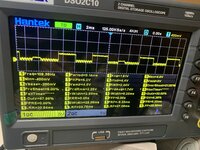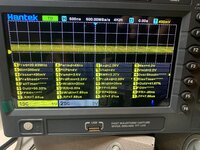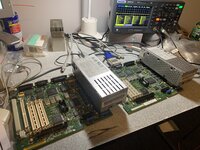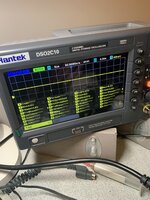So I picked up another Mac IIsi (this brings the total to 3!) but I can't get it to work. I have it and another working IIsi sitting side by side on the bench and have been checking the signals on a scope and comparing between the two. Both have a good 20mhz clock signal at the cpu. The working system has activity on the data and address lines, the other system has none. The working system has activity on the ram data lines, whereas the other system has a strange low frequency signal on all 32 ram data lines. If I force the working system to crash (by bridging w1 briefly) all its data and address activity stops also, however it does not show the same low frequency signal on the ram data lines. I have tried a gglabs rom simm from my se30 that works fine in the working system but doesn't help the broken system. Ive beep tested all ram and rom pins. All oscillator signals seem correct. Anyone have any ideas what to test next? I'll happily test whatever is suggested and post my results!
John

-Strange low frequency signal on ram data lines-

-Good cpu clock signal input-

John

-Strange low frequency signal on ram data lines-

-Good cpu clock signal input-


